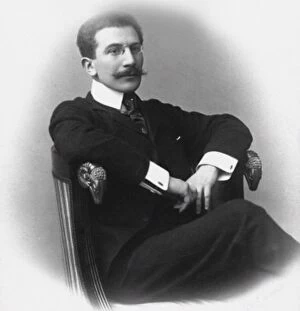Le On Bakst Collection
"Leon Bakst: The Master of Costume Design in the 1900s" Step into the enchanting world of Leon Bakst
All Professionally Made to Order for Quick Shipping
"Leon Bakst: The Master of Costume Design in the 1900s" Step into the enchanting world of Leon Bakst, a visionary artist whose drawings and prints revolutionized costume design. With his intricate attention to detail and bold creativity, Bakst brought characters to life on stage like no other. From Scheherazade to Eunuchs, Bakst's designs captured the essence of each character with precision. His ornamental drawings showcased his deep understanding of architecture and textile patterns, adding depth and richness to every costume. Courtiers came alive under Bakst's skilled hand as he effortlessly blended ornamentation with architectural elements. The delicate yet powerful female courtier costumes were a testament to his ability to create captivating designs that exuded elegance. Not only did Bakst excel in designing for courtiers, but he also mastered the art of creating costumes for valets. His attention to detail was unparalleled as he meticulously crafted every aspect from ornaments to architecture, ensuring that even the smallest details were perfect. Bakst's talent extended beyond human subjects; landscapes became vibrant works of art under his brush strokes. Whether it was a sweeping vista or a minute detail, his drawings transported audiences into mesmerizing worlds filled with beauty and wonder. The ballet world owes much of its visual allure to Bakst's genius. From slave costumes adorned with exquisite ornaments and architectural motifs to village women dressed in stunning attire, his designs elevated performances into unforgettable experiences. Ida Rubinstein reclined gracefully on daybeds designed by none other than Bakst himself. Every curve and ornamentation reflected both comfort and opulence - an embodiment of luxury fit for royalty. Stage sets took on new dimensions when graced by Bakst's artistic touch. Ballet productions such as "Le Spectre de la Rose" saw elaborate ornamental designs merging seamlessly with architectural elements - transporting audiences into ethereal realms where dreams come true. Lastly, sultans donned costumes that were nothing short of regal.



